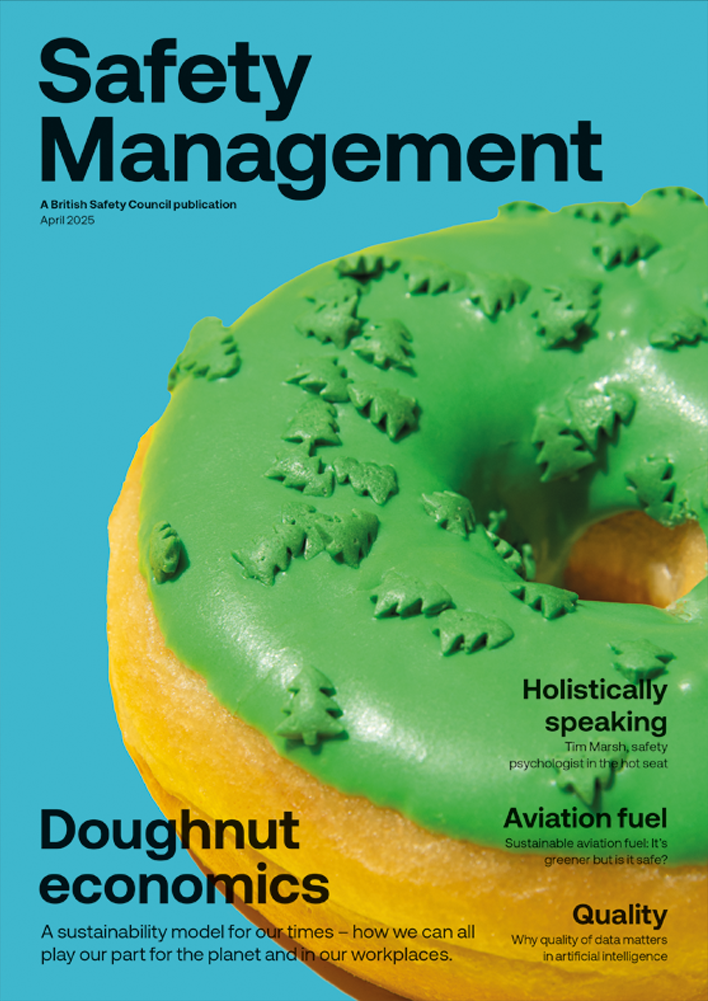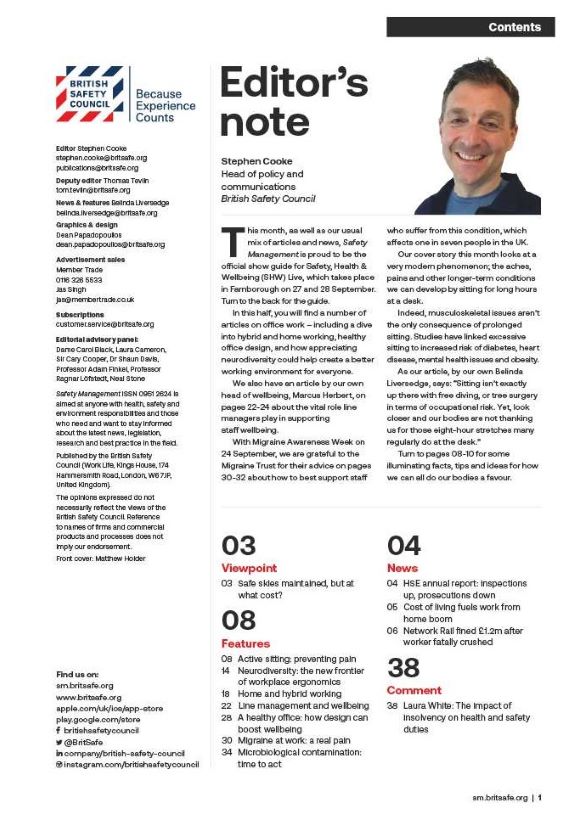Sexual harassment still happens in the workplace. As a Member of Parliament, I am determined to use my role to improve the experiences of women in all aspects of life.
Opinion
Why we need stronger legal protections to protect women against violence and harassment at work
According to a 2023 TUC poll, three in five women (58 per cent) have experienced sexual harassment, bullying, or verbal abuse in the workplace. That figure rises to almost two-thirds (62 per cent) of women aged between 25 and 34.
However, the scale of gender-based violence in the workplace remains overlooked.
 Liz Saville Roberts MP is Plaid Cymru Member of Parliament for Dwyfor Meirionnydd. Photograph: UK Parliament
Liz Saville Roberts MP is Plaid Cymru Member of Parliament for Dwyfor Meirionnydd. Photograph: UK Parliament
Reports of sexual assault, rape, stalking and coercive control from colleagues make up 56 per cent of calls to Rights of Women’s Sexual Harassment at Work advice line. Four per cent of all callers to the National Stalking Helpline in the year ending March 2024 were stalked by a colleague or former colleague.
It’s clear that as things stand, protections for workers are limited. Incidents of sexual assault and rape at Harrods, the CBI, and the BBC went unaddressed and un-escalated – and have allegedly continued at McDonald’s despite promises of action.
Legislating in this space is long overdue and is necessary to ensure staff safety in the workplace.
Existing frameworks
We need more robust measures and better employer accountability. Some of that work has already started, with the UK having ratified the International Labour Organization’s Convention 190 in 2022.
This international law recognises the right to work free from violence and harassment, with employers obligated to promote this right. ILO C190 requires employers to proactively create a safe work environment by implementing clear policies against violence and harassment, providing employee training, and establishing reporting procedures that protect against retaliation. It offers recommendations for adopting preventative measures against workplace violence and harassment, emphasising a ‘gender-responsive approach’ that addresses gender-based violence.
But while ratified, this Convention’s recommendations haven’t been fully implemented.
The Worker Protection Act 2023 improved on this record, creating a ‘preventative duty’ for employers to take reasonable steps to prevent sexual harassment in the workplace.
However, the 2023 Act is limited in its preventative function. This is because an automatic investigation of a breach of the employment duty only takes place after an individual successfully brings a claim of sexual harassment. It also excludes other forms of gender-based violence in the workplace, such as other forms of harassment and all forms of violence, including physical, psychological and emotional abuse, which are included in ILO C190 recommendations. It is not conducive to a change in organisational safety culture.
The Health and Safety at Work etc. Act 1974 (Amendment) Bill
My Health and Safety at Work etc. Act 1974 (Amendment) Bill, developed with the brilliant Suzy Lamplugh Trust and Rights of Women, seeks to fill this legislative gap, and to make use of the authority of health and safety legislation to tackle the cultural issues which need to be overcome to address gender-based violence and harassment in the workplace directly.
The Health and Safety at Work Act 1974 already places a duty on employers to ensure the health, safety and welfare of employees at work. That’s why my Bill calls to amend the Health and Safety at Work Act 1974 to make gender-based violence and harassment in the workplace an enforceable health and safety measure, under the jurisdiction of the Health and Safety Executive (HSE). I believe that harnessing the toughest mechanism we have in the workplace would establish a structured approach to safeguard women at work and make a tangible difference.
In that way, my Bill introduces clear, actionable duties for employers to protect workers from violence and harassment, including gender-based violence, sexual harassment, psychological and emotional abuse, physical and sexual abuse, stalking and harassment, including online harassment and threats of violence. These include risk assessments and policy development, and the provision of recognition and prevention training to all employees.
It also brings sexual harassment and violence into protections already in place for health and safety at work, mandating HSE to develop and publish an enforceable health and safety framework on violence and harassment in the workplace, in collaboration with relevant bodies such as the Equality and Human Rights Commission (EHRC) and law enforcement agencies – and to issue guidance for employers. That framework would include specific provisions relating to preventing gender-based violence and harassment, the duty of employers to create safe and inclusive workplaces alongside the preventative measures they must adopt, and the use of monitoring and enforcement mechanisms to ensure employer compliance.
This is important because HSE does not currently consider gender-based violence a workplace hazard, and the regulator is not viewed as the primary authority for bullying, harassment or domestic abuse in the workplace. Instead, such incidents are viewed as disciplinary matters between employers and employees, and outside the scope of health and safety regulations. Even when incidents could be covered under regulations, the HSE does not act where it believes a “more appropriate” regulator is available.
But while the EHRC, the Advisory, Conciliation and Arbitration Service (ACAS) and the police have been used as alternatives to which workers can report harassment, these organisations and institutions do not have sufficiently robust measures to effectively ensure employers cannot evade accountability. While ACAS and the EHRC have limited enforcement powers, and the police can use criminal law to sanction individual perpetrators, HSE can enforce employers’ non-compliance with health and safety regulations through inspections, fines and prosecutions.
Ending gender-based violence
The Labour UK Government’s goal to halve violence against women and girls in the next decade cannot be achieved without a cross-departmental and public health approach, which goes beyond a focus on criminal justice.
Leveraging health and safety legal frameworks that are already in place will require employers to actively work towards eliminating gender-based violence. This would establish a structured approach to safeguarding women from the spectrum of gender-based violence in the workplace, and allows a systematic, collective and publicly enforceable approach to prevention.
We know that reporting harassment to an employer has not been enough to protect victims. A system that formally monitors sexual harassment and violence through existing health and safety measures, and that places the onus on the employer to address it, is crucial.
That’s why my Health and Safety at Work etc. Act 1974 (Amendment) Bill is an important intervention and will help protect workers while holding employers to account.
Liz Saville Roberts MP is Plaid Cymru Member of Parliament for Dwyfor Meirionnydd.
Follow Liz Saville Roberts MP at:
members.parliament.uk/member/4521/contact
Follow the progress of the Health and Safety at Work etc. Act 1974 (Amendment) Bill at:
OPINION

Heat at work: a silent killer
By Halshka Graczyk and Lacye Groening, ILO on 07 April 2025
Workers across the world are increasingly being exposed to excessive heat with serious implications for their safety and health. It is therefore vital that governments, employers and workers’ organisations develop, share and implement practical and low-cost strategies and measures for effectively reducing the risk from heat stress at work.

Making good work the foundation
By Mike Robinson FCA, British Safety Council on 07 April 2025
In 2024, for the first time, the UK dropped out of the list of the top 20 happiest countries: according to the World Happiness Index. This year, the UK rests in 23rd place, slightly ahead of the US and behind the Nordic countries, Germany, the UAE and others.

The air we share: why tackling pollution protects us all
By Scott Paul, Mums for Lungs on 04 April 2025
Air pollution is often invisible; its impact is anything but. Whether you’re a parent worried about your child’s lungs, a construction worker breathing exhaust fumes, or a commuter passing through busy streets, polluted air is everyone’s problem.



